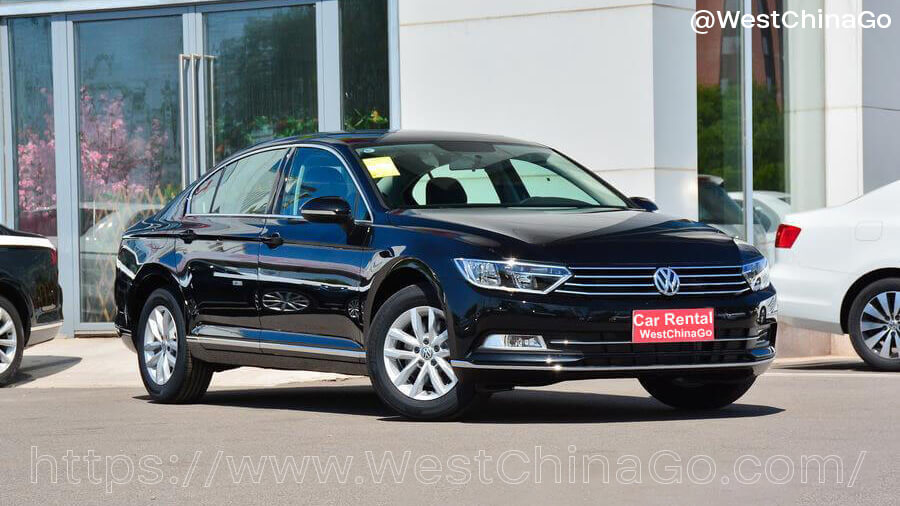.jpg)
Nanjing Niushoushan Cultural Tourism Area
- Chinese name: 牛首山
- location: within the Niushoushan Cultural Tourism Zone, No. 18 Ningdan Avenue,Jiangning District, Nanjing City, Jiangsu Province 南京市江宁区宁丹大道18号
- Climate conditions: subtropical monsoon climate
- Opening Hours: All Year: Monday to Sunday 17:00
- Attraction level: AAAA
- Project Cost: 4 billion RMB
- Ticket price: 98 yuan
- area: 29 km²
- Tour time: 6-8 hours by walking; 4-5 hours by driving
- Famous tourist attractions: 佛顶宫,佛顶前苑,佛顶寺,佛顶塔、牛头禅文化园(弘觉寺塔,明代摩崖石刻)、郑和文化园,禅林路景观区、岳飞抗金故垒,隐龙湖 Usnisa Palace ,Usnisa Pogoda,Usnisa Temple, Niutou Chan Cultrue Park,Shi’ao Wonderland,Zheng He Culture Park,Two Mausoleums of Southern Tang Dynasty,Fortifications for Battle against Jin Wuzhu
- Official Website: https://www.niushoushan.net/
- Tel: 400-165-6363
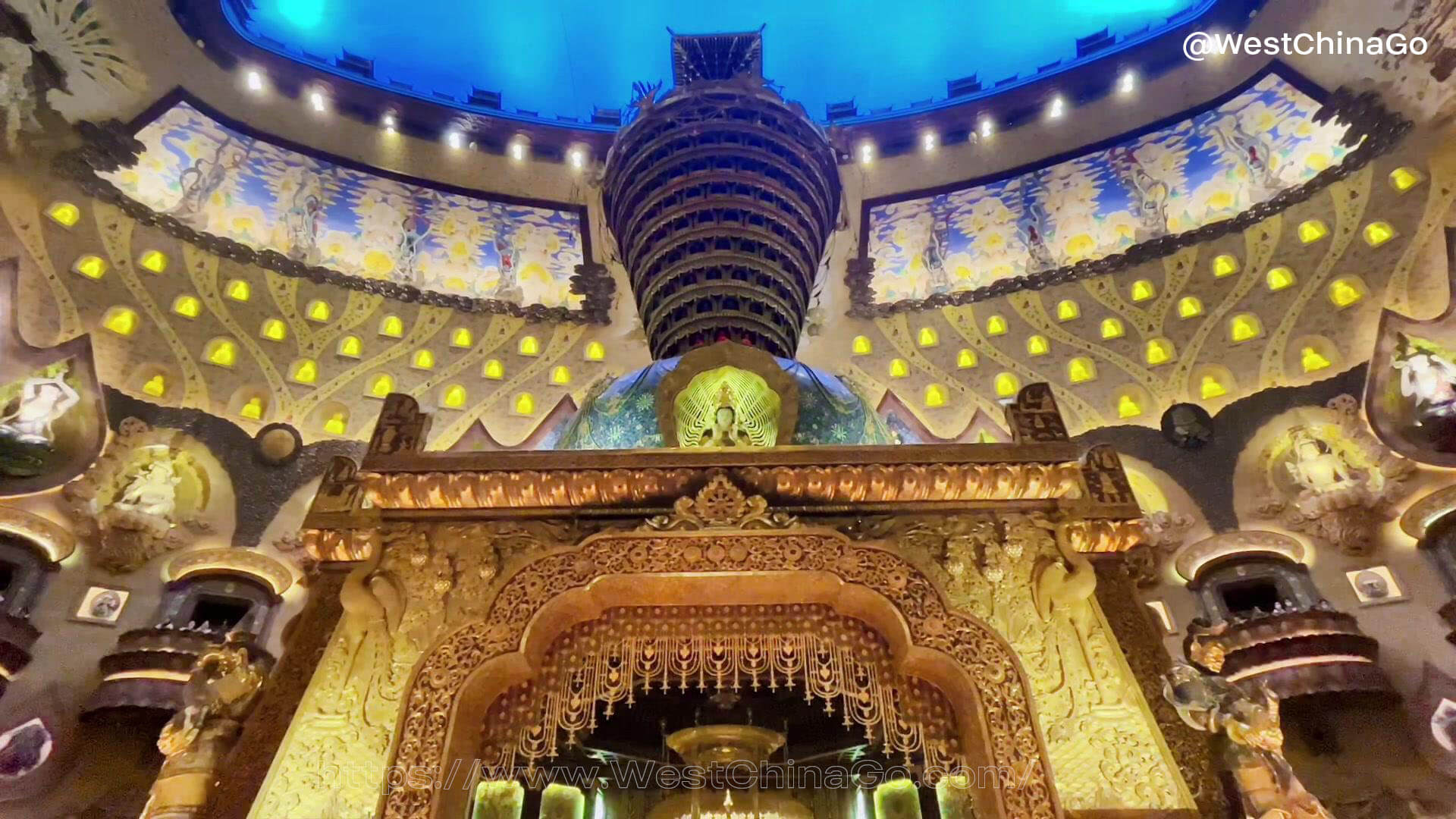
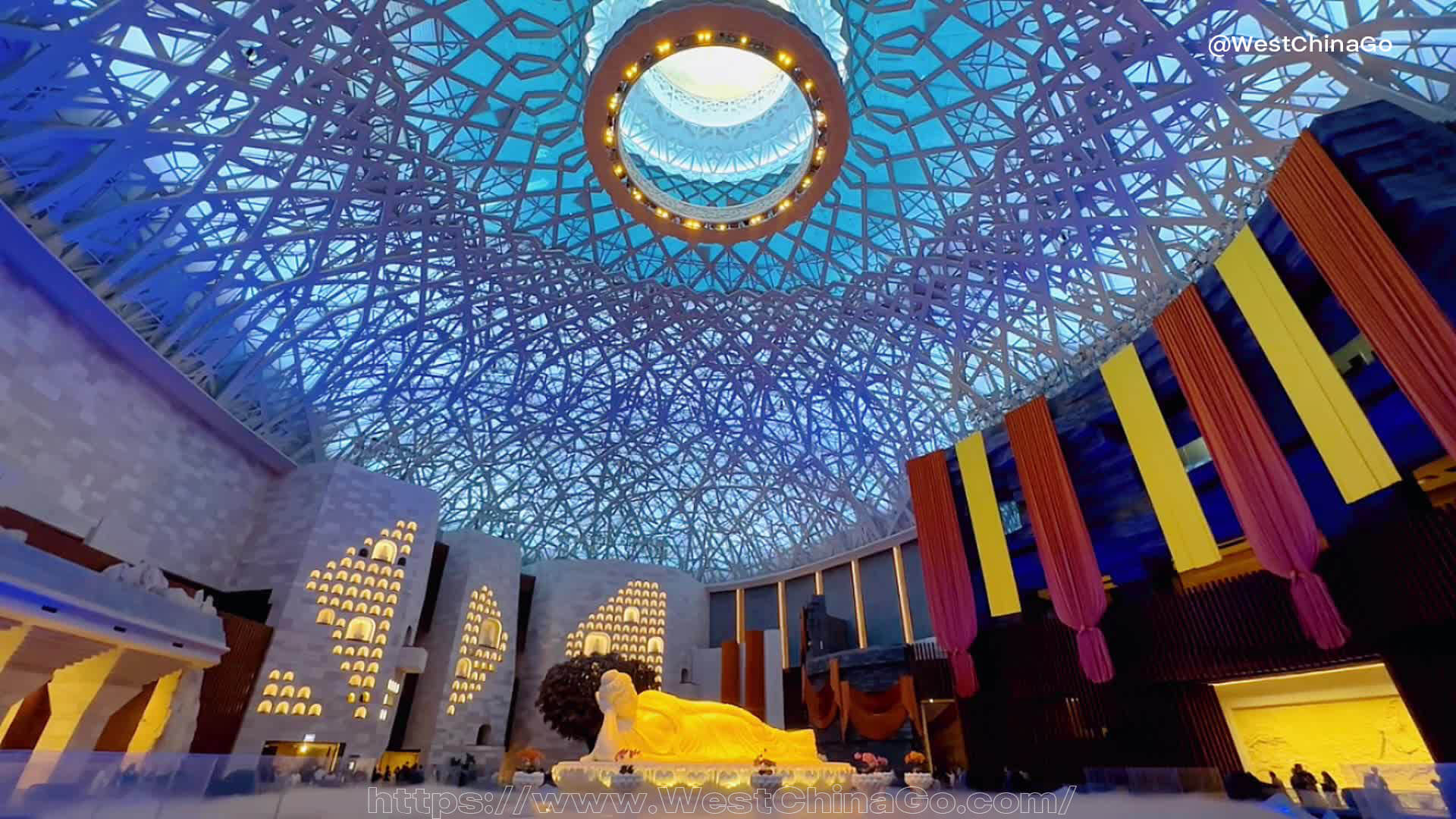
Nanjing Niushoushan Cultural Tourism Area
Explore Serenity and Culture at Niushou Mountain
A Spiritual and Cultural Haven
Located in the southern part of Nanjing, Niushou Mountain is a unique destination that blends spirituality, history, and natural beauty. Named for its twin peaks that resemble the horns of a bull, the mountain has been a sacred Buddhist site for centuries. Today, it is best known for the magnificent Usnisa Palace, a stunning architectural masterpiece housing a relic of Buddha, making it a spiritual pilgrimage site for Buddhists worldwide.
Architectural Marvels and Scenic Beauty
The Usnisa Palace is a breathtaking fusion of modern design and traditional Buddhist elements. Its golden dome and intricate interiors are awe-inspiring, while the immersive light displays and multimedia exhibits inside offer an engaging experience for all visitors. Beyond the palace, Niushou Mountain features lush landscapes, serene walking trails, and cultural landmarks such as ancient temples and pagodas that provide a peaceful retreat from urban life.
A Journey Through History and Faith
Niushou Mountain offers more than stunning views—it’s a journey through history and culture. Visitors can explore the rich heritage of Buddhism through art, architecture, and stories. The mountain is also home to the Foding Temple, a centuries-old site that reflects the enduring spiritual significance of the area.
Why Visit Niushou Mountain?
Niushou Mountain is a must-visit for travelers seeking a blend of natural beauty, cultural depth, and spiritual inspiration. Its iconic landmarks, tranquil atmosphere, and profound heritage make it an unforgettable experience for all.
Plan Your Trip to Niushou Mountain Today!
Let the serene landscapes and cultural treasures of Niushou Mountain rejuvenate your spirit and enrich your journey. Explore this harmonious blend of tradition and modernity on your next visit to Nanjing!
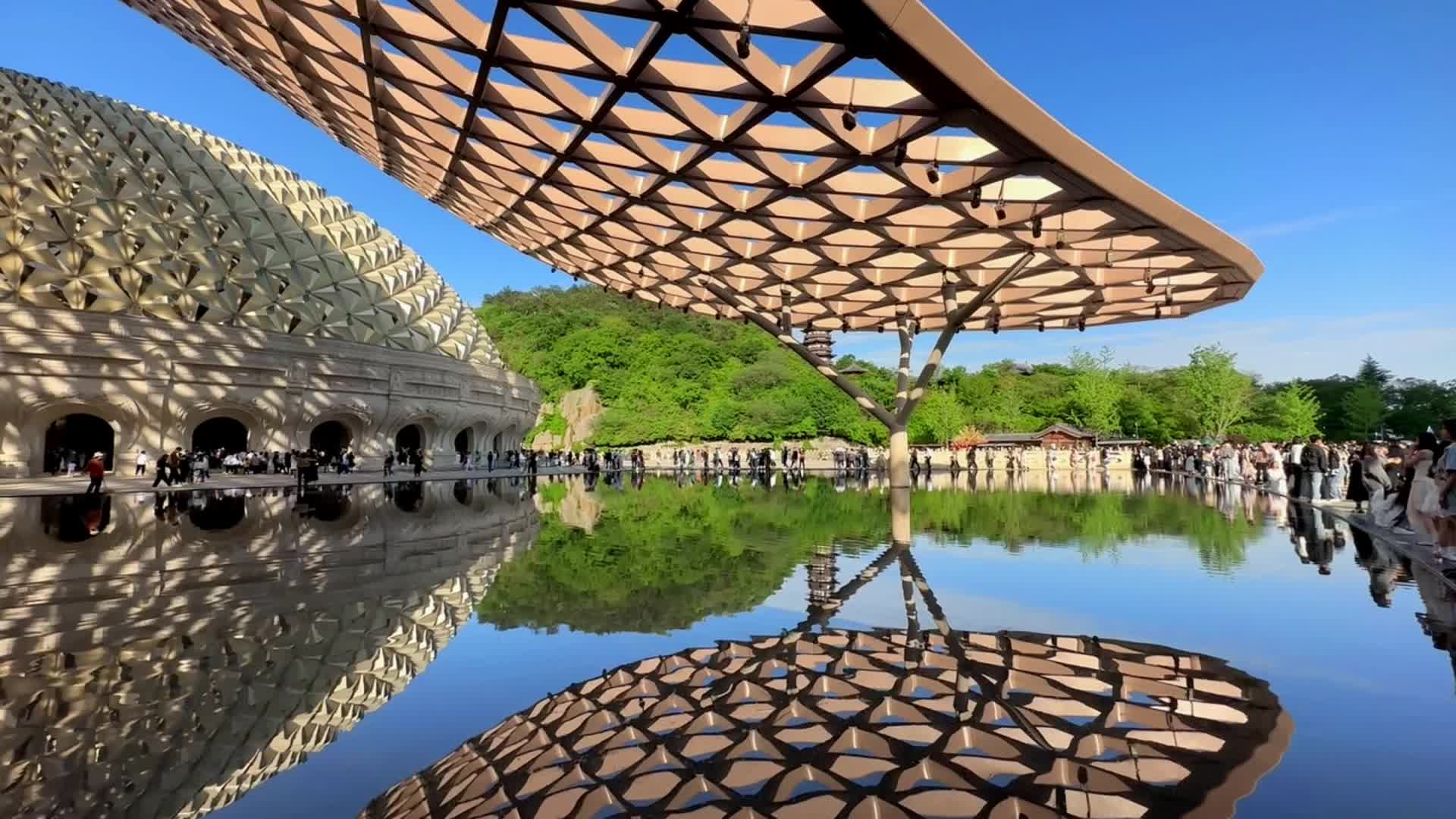
Nanjing Niushoushan Cultural Tourism Area Video
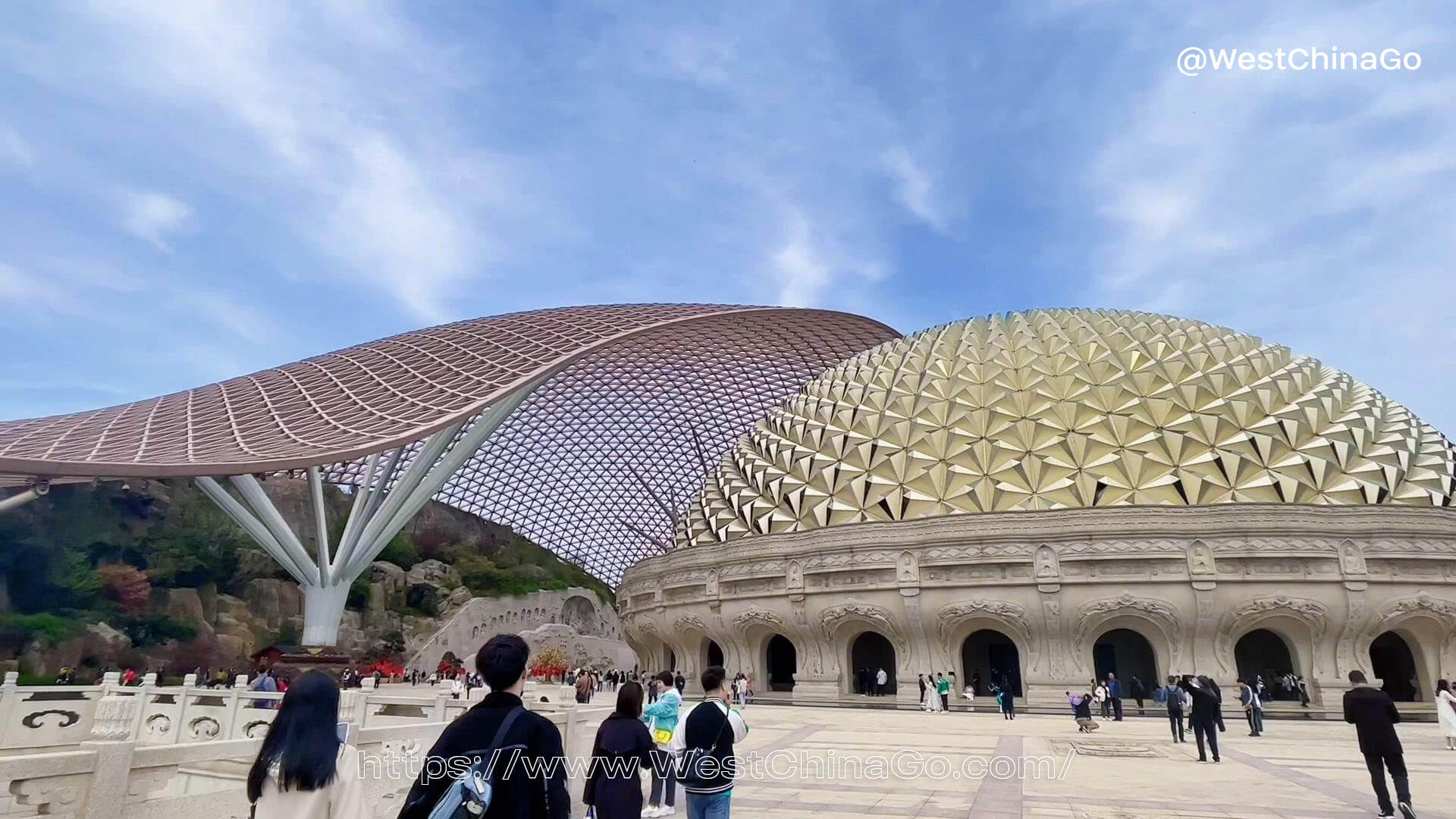
Nanjing Niushoushan Cultural Tourism Area Toruist Map
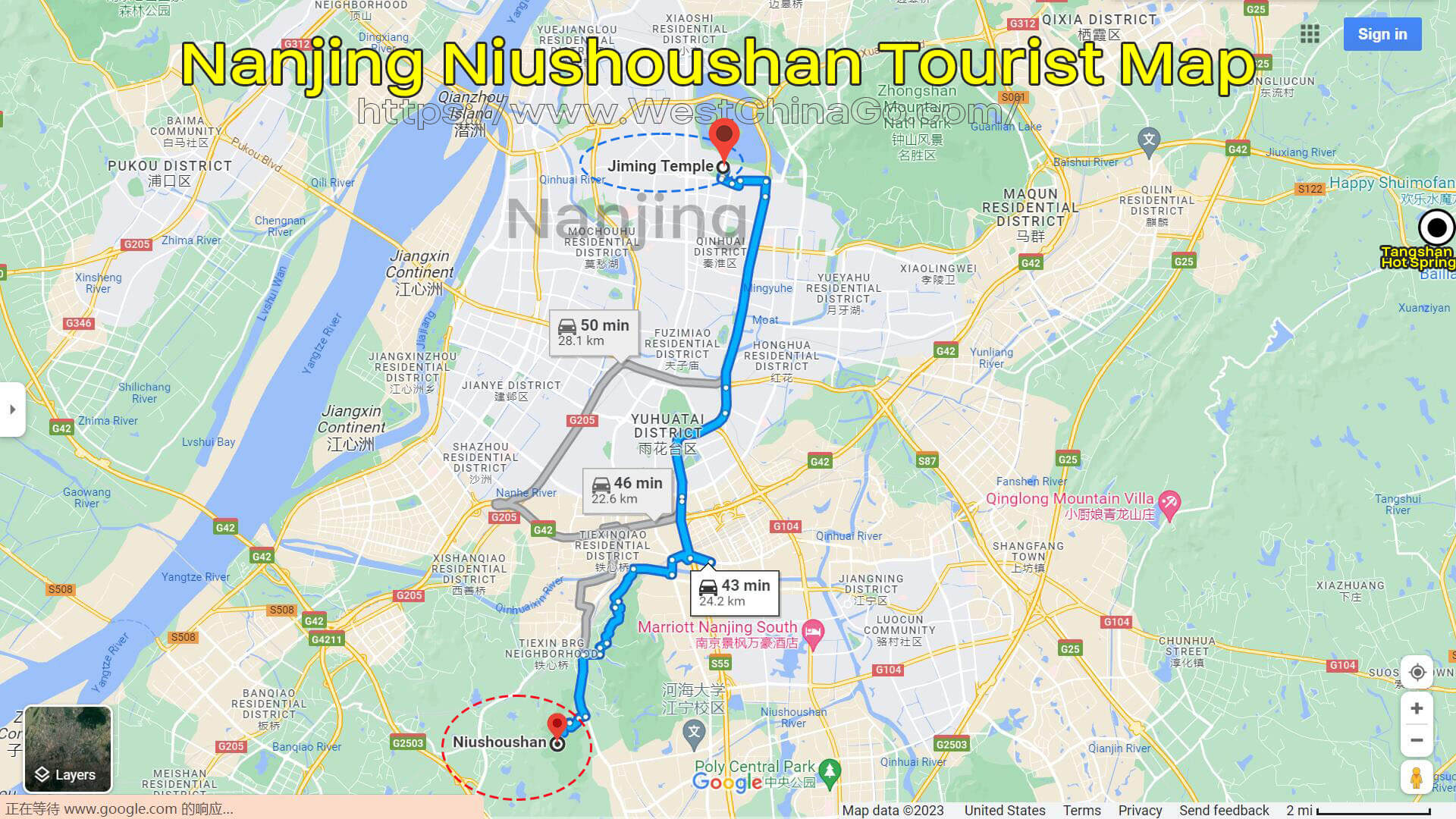
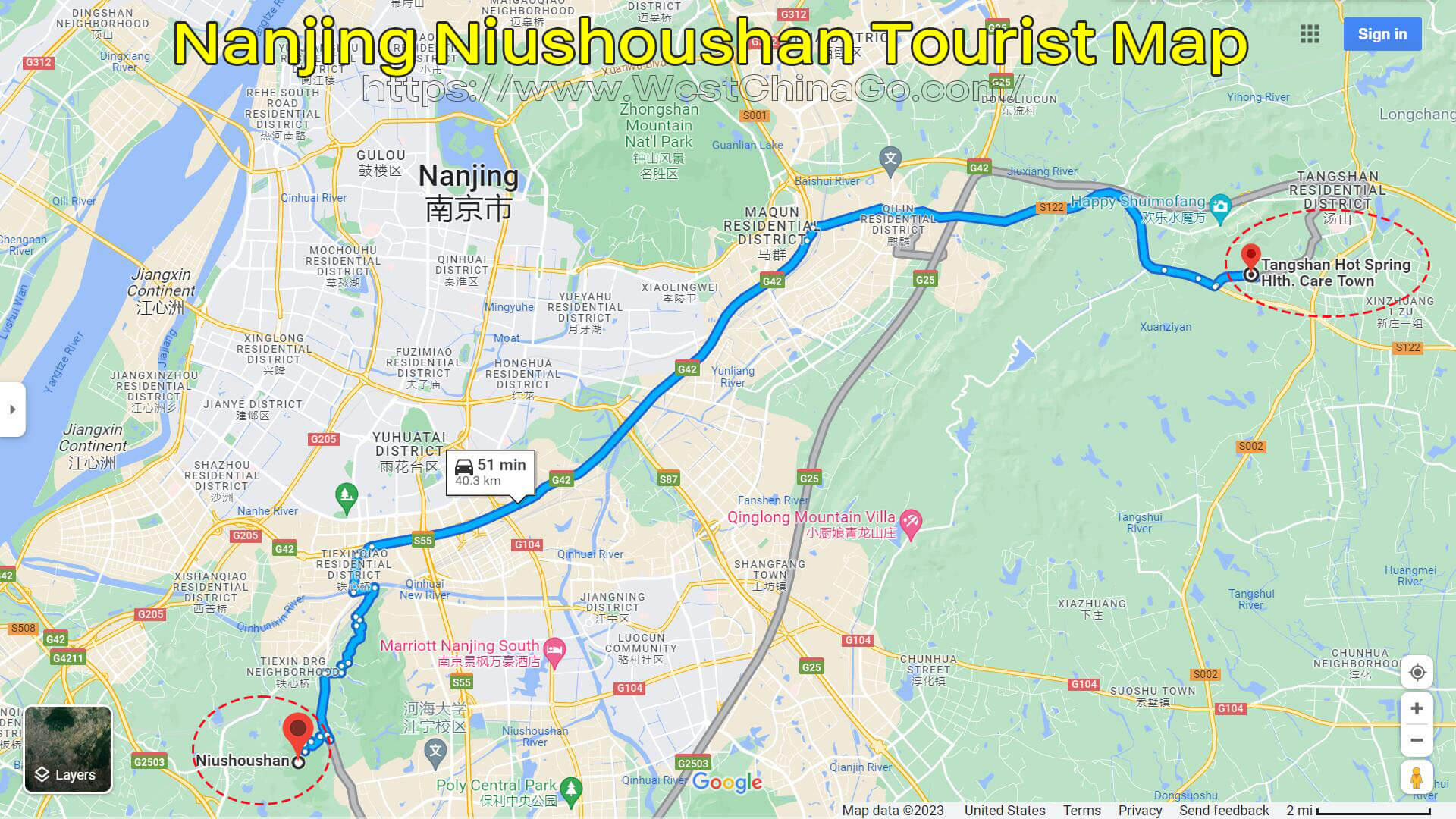
Nanjing Niushoushan Cultural Tourism Area Travel Guide
Detailed itinerary:
- 09:00- Tourists enter the scenic area from the east entrance for sightseeing
- 09:10- Visit Niushou Square
- 09:30- Take a tour bus from Niushou Square to Tianque Road and visit Foding Temple
- 11: 30- Take a tour bus from Foding Temple to Foding Holy Land, and then walk to Foding Palace to enjoy vegetarian vegetarian food
- 12: 30- Visit the Sacrificial Hall at the Buddha’s Palace
- 14: 00- Walk from the Buddha Peak Palace to the Buddha Peak Tower to visit the external landscape, and then take a sightseeing bus to visit the Zhenghe Cultural Park
- 14: 30- Tourists set off from Zhenghe Cultural Park and hike along Chanlin Road
- 16: 00- Tourists gather at the east entrance and return
Nanjing Niushoushan Tour:Car Rental with Driver


佛顶宫
As one of the cores of the Foding Holy Land area, the Foding Palace is located at the west peak of Niu Shou Mountain. It is built on the mine pit left over from history, with a total construction area of about 136,000 square meters. The Niu Shou East Peak echoes each other, recreating the grand scene of Niu Shou’s “Twin Peaks and Double Que” standing side by side. The entire Foding Palace is themed on the offering of Buddha’s parietal bone relics. The exterior is divided into two parts, the big dome and the small dome, implying external support and internal support. The large dome is shaped like the Buddha’s cassock covering the small dome, symbolizing the immeasurable blessings of the Buddha; the lower part of the small dome is in the shape of a lotus throne, and the upper part is in the shape of a mani orb. The combination of the upper and lower parts forms the sacred image of “lotus supporting treasures”
The interior of the Foding Palace is composed of the Zen Grand View on the ground and the underground palace underground. The underground palace is divided into two spaces: the Relic Hall and the Relic Palace. The entire Foding Palace is not only the main place to collect the relics of the Buddha’s parietal bones and accept the worship of believers, but also a cultural exhibition place to present the relic culture and the world’s Buddhist and Zen culture in various artistic techniques. , The first-class expert team in the architectural field aims to realize the grand goal of “new world Buddhist cultural heritage, new landscape of contemporary architectural art”.
禅境大观
The Zen Grand View is 112 meters long from north to south, 62 meters wide from east to west, and has an internal net height of about 41.2 meters, covering three floors above ground. The entire space covers an area of more than 6,000 square meters and is oval in shape. With yellow, white, and gray as the main tone, the landscape of the world is arranged, so that people can appreciate Zen while walking. It consists of three parts, the Zen garden where Buddha was born and became enlightened, and the Rulian Theater in the middle, showing the deeds of Buddha’s life.
The top of the Zen Grand View is the Sala Dome, and the pattern comes from the Sala tree branch when the Buddha passed away. The dome is fully covered with light-transmitting film and lights, which can create the first ray of dawn in the morning, the warm sunlight at noon, the colorful clouds in the evening and the moonlight at night.
The center of the reclining Buddha is a reclining statue of Shakyamuni cast in all copper, with a total length of 7.5 meters. The surface is made of white marble and can rotate slowly at 360 degrees, showing the peaceful and serene Nirvana state of the Buddha.
There are two Zen gardens on the north and south sides of the theater. On the south side is the Zen Garden, which symbolizes the birth of the Buddha. The overall shape is like a lotus flower, and in the middle is a never-ending worry-free tree. On the north side is a Zen garden that represents the Buddha’s enlightenment. In the middle is a never-fading Bodhi tree. Black and white sand and stones are used on the ground to imply the chaos of the world and the purity of the Buddha’s light.
佛顶塔
The Foding Pagoda is one of the landmark buildings of the Foding Holy Land, with a building height of about 88 meters, a building area of 5,065 square meters, nine levels and four sides. “The magnificent pattern. Inside the pagoda is a seated statue of Vairocana Buddha, a Tang-style all-bronze vajra bell, and various sutras on display. The entire Foding Pagoda is magnificent in shape, showing the ancient charm of the Tang Dynasty. When you climb the pagoda and look far away, you can enjoy the beautiful scenery of Niu Shou Mountain in four seasons.
佛顶寺
Foding Temple is located on the southwest side of the main peak of Niu Shou Mountain, facing east from west, covering an area of 35.6 mu, with a total construction area of 10549 square meters. The overall building complex builds momentum against the mountain, and the temple and Buddhist hall buildings are symmetrically arranged with the central axis running through it. The Foding Temple complex follows the ancient religious architectural etiquette system – the system of the seven halls of the Buddhist temple, adhering to the architectural style of the Tang Dynasty, and is divided into five areas according to functions: worshiping Buddha, propagating Buddhism, Zhaitang, Sengliao, and tea garden.
郑和文化园
Zheng He Cultural Park is the tomb of Zheng He, a famous navigator in Ming Dynasty. From the 3rd year of Yongle to the 8th year of Xuande, Zheng He made seven voyages to the Western Seas, going through many hardships and dangers, conducting cultural exchanges with countries along the coast, establishing diplomatic relations and promoting friendship. After his death, he was buried in Niu Shou Mountain.
岳飞抗金故垒
In April of the fourth year of Jianyan in the Southern Song Dynasty (1130), Jin Wushu led the Jin army to approach Jiankang. Yue Fei set up an ambush on Niushou Mountain, built a stone barrier, and defeated the Jin Wushu army. Yue Fei’s anti-gold fortress is the wall built with reddish-brown stones when Yue Fei fought in Niu Shou Mountain. The bottom of the wall is 0.5 meters wide and 1.5 meters high. At present, only the next section of the 200-meter-long stone barrier site is preserved.
Yinlong Lake 隐龙湖
Yinlong Lake was originally called Bamu Pond. Among the folks, Yinlong Lake is also a natural weather forecaster. It is said that whenever there is fog on the lake, it indicates that it will rain. A road around the lake has been built around Yinlong Lake, and tourists can walk around the lake on this road. Ryegrass and green grass are planted around the square, which grow alternately and are evergreen all year round.
Chanlin Road Scenic Area 禅林路景观区
The total length of Chanlin Road is 3.7 kilometers. It is an ecological tour line, covering multiple ecological landscape areas with beautiful scenery. It is a natural oxygen bar for tourists to experience nature, breathe fresh air and relax.



